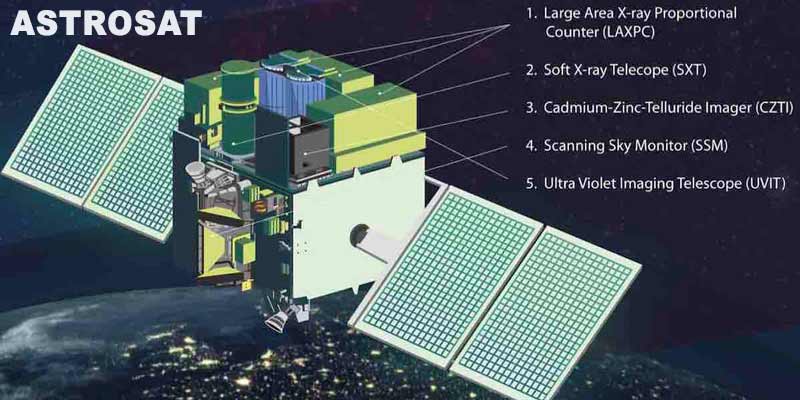- India
- Aug 27
AstroSat detects extreme UV light from a far galaxy
AstroSat, India’s first multi-wavelength satellite, has detected an extreme ultraviolet (UV) light from a galaxy called AUDFs01, which is 9.3 billion light-years away from Earth.
According to Pune-based Inter-University Centre for Astronomy and Astrophysics (IUCAA), a global team led by IUCAA scientists have achieved the major breakthrough.
This team comprised scientists from India, France, Switzerland, the USA, Japan and Netherlands. The observations were published in Nature Astronomy.
How were the observations conducted?
The team observed the galaxy, which is located in the Hubble Extreme Deep field, through AstroSat. These observations lasted for more than 28 hours in October 2016.
But it took nearly two years since then to carefully analyse the data to ascertain that the emission is indeed from the galaxy. Since UV radiation is absorbed by the Earth's atmosphere, it has to be observed from space.
Earlier, NASA’s Hubble Space Telescope, with a significantly larger UVIT (UV imaging telescope), did not detect any UV emission (with energy greater than 13.6 eV) from this galaxy because it is too faint.
AstroSat/UVIT was able to achieve this unique feat because the background noise in the UVIT detector is much less than the ones on the Hubble Space Telescope.
What are the features of AstroSat?
AstroSat is India’s first dedicated multi wavelength space observatory. ISRO launched AstroSat on September 28, 2015.
This scientific satellite mission endeavours for a more detailed understanding of our universe.
It is the first dedicated Indian astronomy mission aimed at studying celestial sources in X-ray, optical and UV spectral bands simultaneously. Most other scientific satellites are capable of observing a narrow range of wavelength bands.
Multi-wavelength observations of AstroSat can be further extended with coordinated observations using other spacecraft and ground based observations. All major astronomy Institutions and some universities in India are participating in these observations.
The objectives of AstroSat mission are:
* To understand high energy processes in binary star systems containing neutron stars and black holes.
* Estimate magnetic fields of neutron stars.
* Study star birth regions and high energy processes in star systems lying beyond our galaxy.
* Detect new briefly bright X-ray sources in the sky.
* Perform a limited deep field survey of the universe in the ultraviolet region.
Manorama Yearbook app is now available on Google Play Store and iOS App Store

